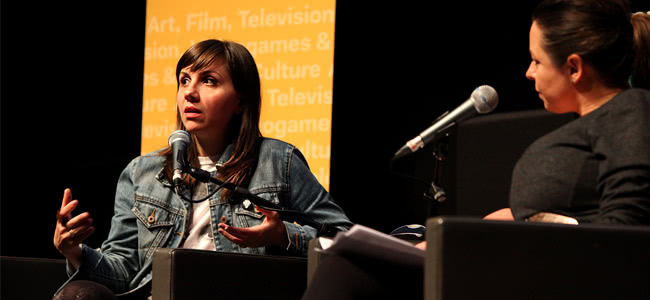Earlier this month, Entertainment Assist, with the help of Victoria University, unveiled the largest ever mental health study conducted on industry workers anywhere in the world. It included some tough and troubling figures.
The study found that industry workers are paid significantly less than the rest of the community and have higher rates of suicide, due to a work environment that is “unhealthy, often divisive, competitive and lacking social support”.
But it looks like things are even bleaker if you happen to be a female working in the music industry. At least, that seems to be the overarching theme in Music Victoria’s recent Women In The Victorian Contemporary Music Industry study.
Music Victoria announced today that they are establishing a Women’s Music Industry Advisory Panel to address barriers and leverage opportunities for women in the Victorian contemporary music industry and community, inspired by their study, which surveyed 329 female industry professionals.
In a statement to the press, Music Victoria indicated that key feedback from the survey highlighted issues such as pay inequality, discrimination against mothers, a confidence gap between men and women, and sexual harassment at live music venues.
“Pay inequality is well documented and recent research has found the pay gap between women and men increased from 14.9% in May 2014 to 19.5% in May 2015 in the arts and recreation services industry, and is now higher than the average national pay gap of 17.92%,” the study notes.
“The survey results identified five interconnected factors that contribute to the pay gap experienced by women in the music industry: lack of paid work opportunities; casualisation of the workforce; gendered nature of caring responsibilities; access to opportunities; and the confidence gap.”
Among the troubling figures presented in the report, 60% of respondents indicated that they earned under $40,000 per annum, while the rest indicated they earned under $20,000 per annum, less than the national minimum wage of $34,112.
“60% of respondents indicated they earned under $ 40,000 p.a. and 40% earned under $ 20,000 p.a.”“Simple economics of greater demand than supply for jobs in the music industry is a key factor in keeping wages and fees low, and in many cases, unpaid,” the authors added, while noting that “volunteering, internships and other unpaid opportunities are plentiful”.
“The overrepresentation of men in decision making roles in the music industry means it can be difficult for women to develop the relationships they need to ‘get a foot in the door’ and ‘take the next step’ to establish and build their careers,” the authors write.
“Numerous survey respondents felt overlooked for opportunities because of the perception that they could not perform on stage or in a particular role as well as a male. The survey results provide plenty of examples of the ‘just a girl’ and ‘boys club’ mentality of many men (and some women).”
[include_post id=”457662″]
The report also found that almost half of all mothers working in the Victorian music industry report some form of workplace discrimination and of these, a third resign and look for another job or drop out of the workforce altogether.
The report also cited research by La Trobe University, which found that unwanted sexual attention is a significant problem faced by women, and occasionally men, going out in Melbourne. 96.6% of respondents thought that unwanted sexual attention happened in licensed venues.
See a list of key findings from the Women In The Victorian Contemporary Music Industry report below.
Women In The Victorian Contemporary Music Industry Key Findings
45% of respondents listed ‘musician’ as their main role
Other respondents worked in administration (27%), music management (25%), publicity (25%) and songwriter (24%)
27% of respondents said they worked in music full-time
60% of respondents indicated they earned under $40,000 p.a.
40% earned under $20,000 p.a.
38% of responses said 1-25% of their income came from the music industry
51% said 1-4 employees at their workplace are female and 38% said 1-25% of employees are female
28% said 0% of senior managers at their workplace are female and 30% indicated 1-25% were female
Image: Pitchfork editor Jessica Hopper in conversation with Myf Warhurst

































